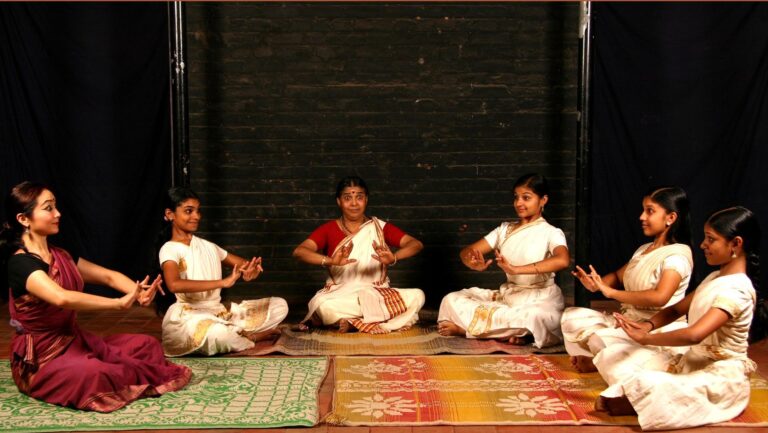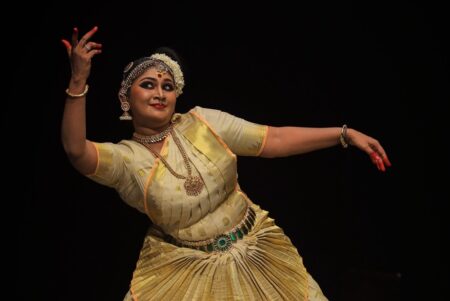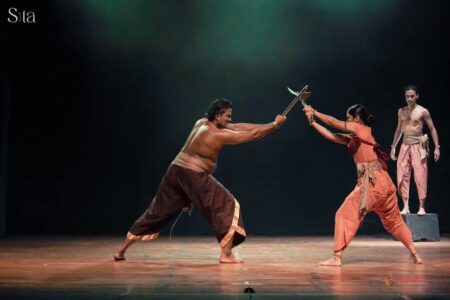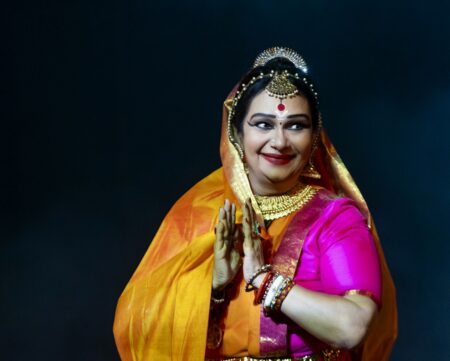A new, systematic teaching method evolved with the introduction of acting and facial expressions in Mohiniyattam.
We discussed in detail the story of my effort to learn Nangiarkoothu and how Ammannur Madhava Chakyar helped me find a foothold in this arena. Working with Ammannur asan was also a great revelation for me. I realised that elements of the great acting tradition of viralis or the female dancers mentioned in the epic tale Chilappatikaram was still being kept alive in theatre traditions such as Koodiyattam also known as Kudiyattam. One can assume that such subtle acting techniques would have been an integral part of the dance traditions of this land as described in Chilappatikaram. However, over the last few centuries, patronage declined and talented dancers were few with whom the techniques were preserved. It is noteworthy that talented dancers like Orikkaledath Kalyaniyamma might have had that spark in her acting that readily impressed doyens of aesthetics like Rabindranath Tagore. It became my mission to revive that acting tradition in a way that suits the Lasya style of Mohiniyattam.
Natural expressions in dance
Based on the knowledge I received from my Guru, I started working on the facial expressions – like tearing up when sad, eyes becoming red in anger, the shivering and fast movement of the eyes in fear.
A co-ordinated effort was made to align the movements of the eyes with the movements of the different parts of the body as the situation demanded. Thus, a system was developed to teach the students the basic intricacies of facial acting combined with body movement giving stress on both lasya and bhava.
Much importance was given to Bhakti or devotion and the expression of each emotion was linked with the spontaneous movement of the body as expressed in real life.
As explained above, Mohiniyattam follows a style that holds up a mirror to natural expressions — tears brimming in the eyes or eyes reddening in anger. In due course, a new syllabus evolved focusing on techniques, mudras, and facial acting and regular Mohiniyattam classes under gurukula system began in earnest in Natanakaisiki.
Polishing the style
The present system of Mohiniyattam training at Natanakaisiki could be described as an amalgam of the earlier Kalamandalam style, which was propagated by Kalamandalam Kalyanikuttiyamma, and certain other modern techniques adapted from the present-day Kalamandalam style of Mohiniyattam.
Here, I would like to endorse the efforts at Natanakaisiki (the research section of Natanakairali, which is churning out splendid work for the revival of the ancient Kerala dance forms and the training centre for female dancers) with the support of the National Sangeet Natak Akademi, in the revival of the ancient dance forms such as the Poli, Esal, Chandanam, Mukutti, Kuratti, and Kummi. These dance forms were part of Mohiniyattam before its revival in the early 20th Century. The stature of these dances and of the dancers suffered backlash due to the anti-nautch movement and other related social circumstances, which started taking roots around the time.
The origin of traditional art forms
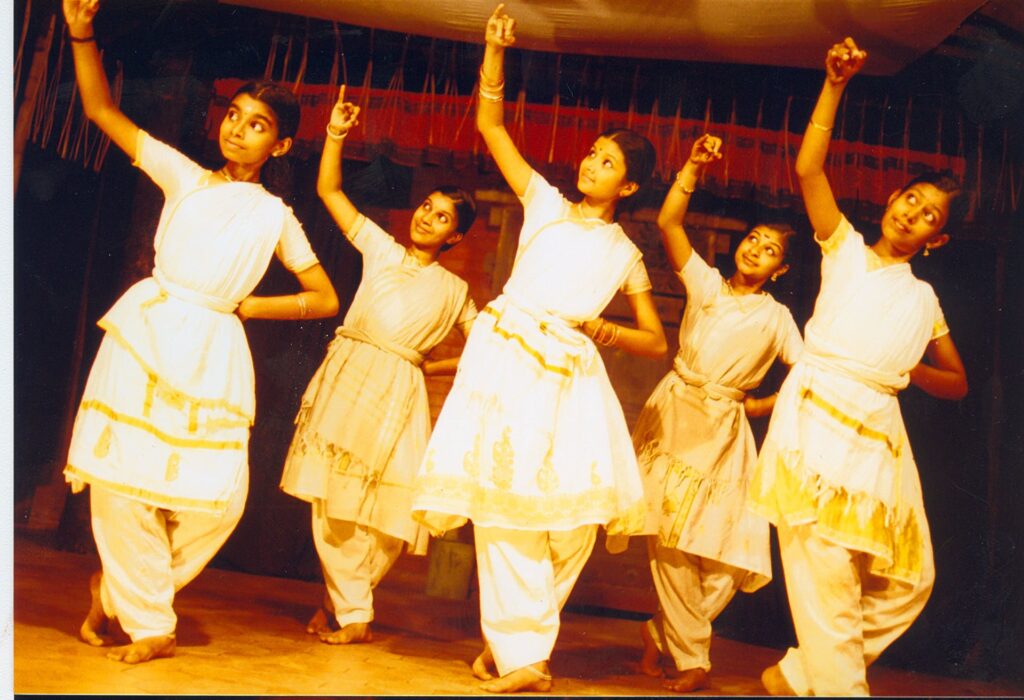
My own research convinced me that dance forms like Poli, Chandanam and Mukkuthi were closely related to the rituals of ancient Kerala. For example, in Theyyam, performers of the ritual smear sandalwood paste on the spectators. Such acts have close links with the tradition of mother goddess worship in the land of Kerala.
Mohiniyattam, too, could have had similar origins in the worship of mother goddess and in pieces like Chandanam that were part of a traditional repertoire in the distant past. For instance, the deshi piece Esal narrates the arguments between two women – Goddesses Lakshmi kurathi and Parvathi kurathi mocking each other’s husbands Vishnu and Siva, respectively.
Lakshmi asks Parvathi whether her husband Siva killed an elephant to harvest the leather. Parvathi responds by referring to Vishnu’s killing of an elephant to harvest its tusks. The wrangle goes on for a while before they both decide that there is no point in continuing it and decides to be friends.
These stories portray our gods with raw human emotions that everyone experiences. They may also have the background of the conflicts between the Shaiva and Vaishnava philosophies in the past. These items were gleaned from the ruins into which they had fallen but had imbued with its hidden values and restored to their former state of glory.
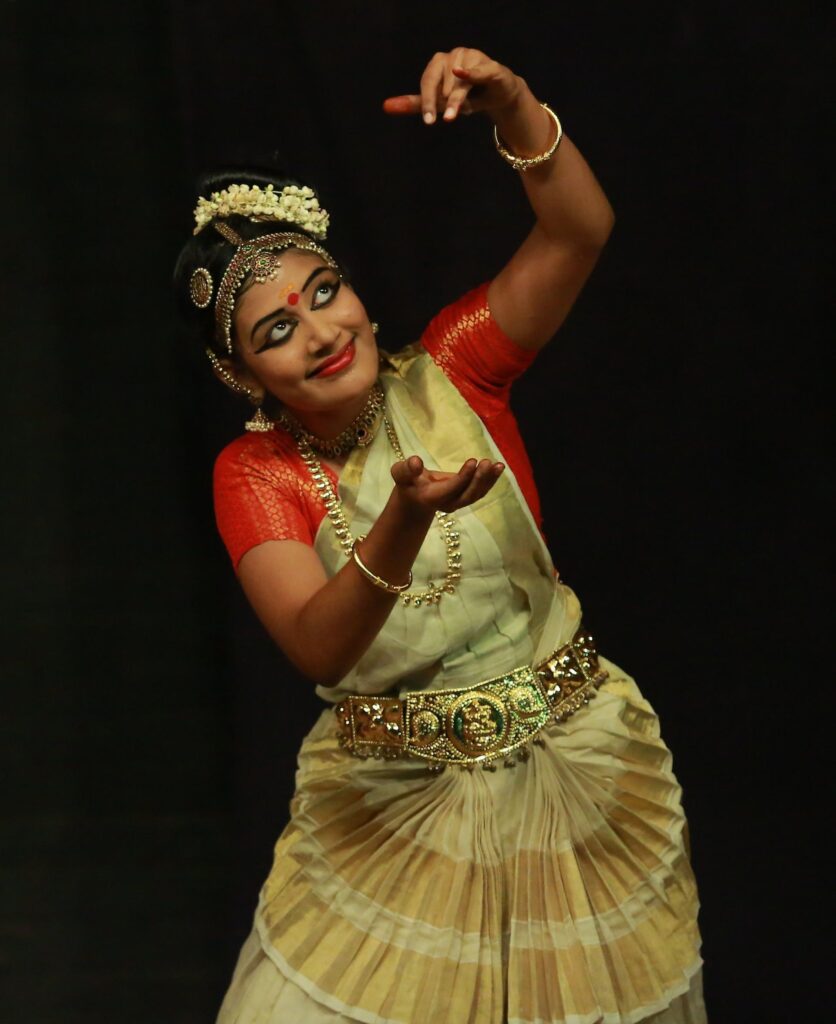
Backed with research and history, it is my perception that the ‘sopana’ style of dramatist and theatre artist and poet Kavalam Narayana Panicker is the most suitable for the restoration and revitalization of Kerala dance forms and its traditions. Sopana Sangeetham enriched the native traditions of Mohiniyattam and it has attained much greater charm than I have ever anticipated.
(Assisted by Sreekanth Janardhanan)
Click here for more on the series
Write to us at [email protected]

